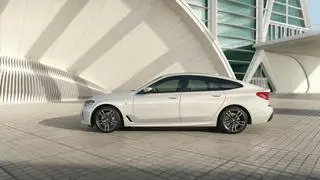Rajiv Bajaj swears by the ‘less-is-more’ dictum which puts in perspective his company’s focus as a specialist motorcycle manufacturer.
The Managing Director of Bajaj Auto was naturally keen that this be reflected in the 650 dealerships across the country. The vision was already in place five years ago but it was only in 2012 that the effort kicked off in earnest. Last year, a showroom in Pune was completely done up and, since then, 500 more have been added to the list. The entire exercise is expected to be complete by June-end.
Brand strategy Today, the new brand strategy revolves around robust Bajaj Motorcycles in the dealerships. “There is nothing profound about the branding. It only reflects our strategy for the Pulsar and Discover and the categories they operate in,” Bajaj told Business Line.
K Srinivas, President (Motorcycle Business), believes the revamped dealerships showcase the fact that the company is a motorcycle specialist and leads with technology. “The way to do this is to have a proper layout and choose the right elements in terms of colours and textures. The feel gives a right indication of engineering strength and technology,” he says.
As Srinivas guides us around the Pune dealership, not too far from the Akurdi headquarters and the first to get off the mark with the new look, the first thing we see is the corporate wall on the left. The centrepiece here is DTS-i, the key differentiator for Bajaj bikes. For the Indian customer whose top priority is mileage, this technology also assures the added bonus of power. The Bajaj Motorcycles logo cannot be missed either.
“We are basically a two-brand company in India,” Srinivas says, referring to the Pulsar and Discover. (The Platina and Avenger, in contrast, are outlier brands). The showrooms are therefore centred around these brands and when anyone walks in, the first thing they see is the Pulsar.
Next is the new product wall which gives an idea of the next bike to be launched. And, finally, you come to the Discover wall which is a lot bigger since it is a commuter product which is in the big numbers category.
“The moment you enter the showroom, all this becomes a natural flow of the walk pattern ,” Srinivas says.
The underlying message is that the retailing experience should be as important as the brand. In this particular Pune showroom, we are told that sales have increased ever since it went through its facelift. “We had decided to become a bike specialist but the showrooms did not reflect this intent. This one here became a model showroom and was ready about a year ago,” Srinivas says.
The hard work involved in this redesign exercise was lead by global consultant, Fitch providing the design inputs, while invaluable advice also came from marketing guru, Jack Trout. Suppliers were then identified to provide standardised furniture to all dealerships. A Pune-based manufacturer was entrusted with the job of readying the different walls for the bikes while three suppliers took care of the graphics. While all these investments were borne by the dealers, the company was constantly with them in creating the foundation.
The other interesting part about the new showrooms is that the entrances are on the side. In most dealerships, this is more central with the result that the customer first sees the receptionist and hordes of people. “We did not want that and were keen that the products lead the way with people separated at the back for dealing with customers,” Srinivas says.
Standing out From Rajiv Bajaj’s point of view, Motorcycles are largely in a B2C space and the retail strategy is therefore exclusive to the product. The RE three-wheelers, likewise have their own distribution network.
“Strategy works best when there is an obvious and exclusive connect between the brand's position, its communication and its distribution. That makes what the brand is and isn't clear to everyone outside and inside the organisation,” Bajaj says.
Likewise, the KTM Stores are unique to products from the company. “Retail identity must be connected to product branding not corporate ownership as customers care about the former not the latter,” he adds, referring to the 48 per cent plus stake Bajaj Auto holds in KTM.
A Pulsar is in a niche of its own as also the KTM Duke 390.
“In marketing, perception is accorded primacy over reality. But we must remember that while perception is the fruit, it is tangible, factual, credible differentiation that is its root,” Bajaj declares.








Comments
Comments have to be in English, and in full sentences. They cannot be abusive or personal. Please abide by our community guidelines for posting your comments.
We have migrated to a new commenting platform. If you are already a registered user of TheHindu Businessline and logged in, you may continue to engage with our articles. If you do not have an account please register and login to post comments. Users can access their older comments by logging into their accounts on Vuukle.